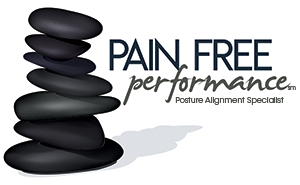When clients are new to postural alignment therapy, they become awakened to a new awareness of viewing the body. What do we mean by this?
When someone is in chronic or acute pain, the pain becomes their focus. Pain requires individuals to use great effort in order to function throughout their day. Their attention is centered on how to avoid pain. Our bodies are skilled at compensating. To reduce overall pain, our bodies will change the way in which we move as a form of survival.
So as Egoscue therapists where do we start?
First: We place the focus on the joint position. We identify the joint position though palpating or touching the joints. But what does the joint position tell us?
When we look at the body, we are looking for what is different from the natural skeletal position.
Do the shoulders, hips, knees, and ankles align?
Is a shoulder elevated?
Or, do the knees and feet turn out instead of being straight.
If any of these joints are off, the body is unable to work as a unit and pain results from misalignment.
Second: We assess the way the body is loading.
We do this by having the client do a body analysis. The client closes their eyes and connects to the weight of their body. Oftentimes, clients are heavier on one foot and their
weight distribution can be uneven in both feet. This allows us to know that their body’s are misaligned and that natural compensation patterns are occurring for the client to move. As therapists we
use this assessment to understand the way the client’s joints load the weight bear of their body. This information helps us establish a baseline of their imbalances.
Third: Gait analysis
All joints and muscles have a function or movement that they perform. When a person is misaligned and their joints are different than the natural skeletal position, their body will compensate for
this misalignment. We, as therapists, look at the way a client walks and moves. We are looking for what part of the body is not working and what parts of the body are compensating for the work
of the inactive part of the body. Compensation can be new or have developed over years.
Often times in gait or walking we notice:
No arm swing or more arm swing on one side
Rotation and twisting in the upper body
Elevation of a hip
Knees and feet being turned outward or inward
Uneven heel strike and decreased movement in the feet
Any compensation pattern will lead to inflammation, arthritis, pain, and decreased quality of life.
So what do we do with this information!?!
Our goal is to pull the body into alignment. We correct the muscle imbalances and improve the way the body moves. Without proper alignment and motion you will set your body up for pain. Correct the alignment and live pain free.

